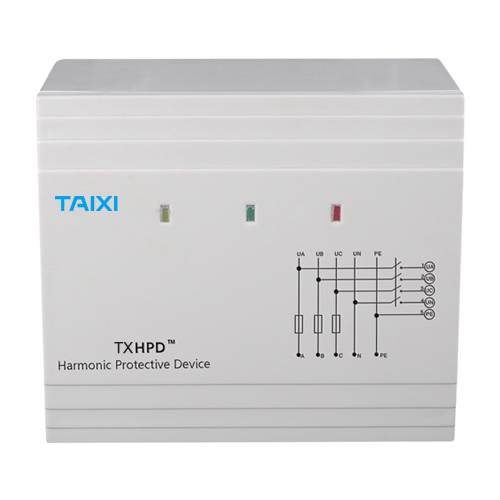Harmonic refers to the sub-components obtained by Fourier series decomposition of periodic non-sinusoidal AC quantities, which are larger than the integral frequency of the fundamental frequency. It is usually called higher harmonics, and the fundamental wave refers to its frequency and power frequency. (50 Hz) the same component. The interference of higher harmonics is a major "public hazard" affecting the quality of power in the current power system, and countermeasures are urgently needed.
We know that harmonics and the hazards they produce are caused by overvoltage or overcurrent, causing some damage. So solving the harmonics is very simple, we only need to make the harmonic protector absorb the harmonic current generated by the harmonic source. The principle of harmonics absorption harmonics is very simple. In simple terms, you can think of the harmonic protector as a capacitor string reactance. Because the impedance is very low, the current will flow here, which is actually the impedance shunt. The harmonic current of the system is basically solved.
The harmonic protector is generally located at the front end of the precision equipment, and is resistant to surge shocks and absorbs 2 to 65 times of harmonics. It protects the equipment from harmonic control. High-end products such as: lighting control system, computer, TV , motor speed control equipment, uninterruptible power supply, CNC machine tools, rectifiers, precision instruments, electronic control mechanisms, etc., all of the harmonics generated by these non-linear electrical equipment, which can cause the power distribution system itself or connected to the system Equipment failure. The harmonic protector can eliminate the harmonics in the generation source and automatically eliminate the interference of high harmonics and high frequency noise, pulse spikes and surges generated by the electrical equipment. The harmonic protector can purify the power supply, protect the electrical equipment and power factor compensation equipment, and prevent the false trip of the protection device, thereby protecting the safe and efficient operation of the electrical equipment.
Next, we understand the working principle of harmonics removal harmonics from the professional academic point of view.
The principle of the capacitor compensator plus the inductor to suppress harmonics, the inductor and the capacitor maintain a certain ratio to filter out harmonics of different frequencies.
The capacitor string reacts to form a series oscillating circuit, which exhibits a very low impedance at the resonant frequency (in theory, 0). If the series resonant frequency is consistent with the characteristic harmonic frequency of the grid, it becomes a pure filtering loop, if only a small amount of harmonics are absorbed. Wave, called the detuning filter loop.
The main purpose of the detuning filter loop is to prevent harmonic amplification, and the filtering effect is not large. The loop resonant frequency of the loop transmission is usually lower than the lowest harmonic frequency of the grid, which is set to 3.8~4.2 times of the fundamental frequency.
The engineering calculation formula is: reactor reactance XL = percentage of capacitor capacitive reactance XC (X%)
Or: reactor power QL = percentage of capacitor fundamental capacity QC (X%)
Reactor reactance or capacity is generally 6~7% of capacitor capacity or capacity
When x = 6% is selected, the number of resonances is vr = 4.08.
The detuned filter circuit only absorbs a small amount of harmonics of 5 times or more, and most of the harmonics generated by the harmonic sources flow into the grid, and the capacitor capacity is determined according to the expected power factor value.
The main purpose of a pure filter loop is to absorb harmonics while compensating for fundamental reactive power.
In the series resonant state, the combined impedance XS of the filter loop is close to zero, so a "short circuit" can be formed for the relevant harmonics. Below the resonant frequency, the filter loop is capacitive, so the capacitive fundamental reactive power can be output to compensate for the inductive reactive power. The filter loop is inductive above the resonant frequency. Since the filter loop is capacitive below the resonance point, it forms a parallel resonant loop with the grid inductance below its characteristic frequency. If there are no characteristic harmonics in this frequency range, the parallel resonance will not cause harm to the grid.
Since the main task of the filter loop is to absorb the harmonics of the power grid, the flexibility of adjusting the reactive power of the fundamental wave is limited, and only the loops can be switched. The order of input is from low to high, and the order of cutting is performed. From high to low. For the compensation filter device with large capacity, a combination of pure filter loop and detuned filter loop can be adopted, that is, the pure filter loop is fixedly operated to compensate the basic load, and the detuned filter loop is used as the adjustment operation.



